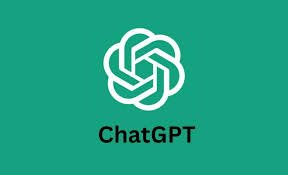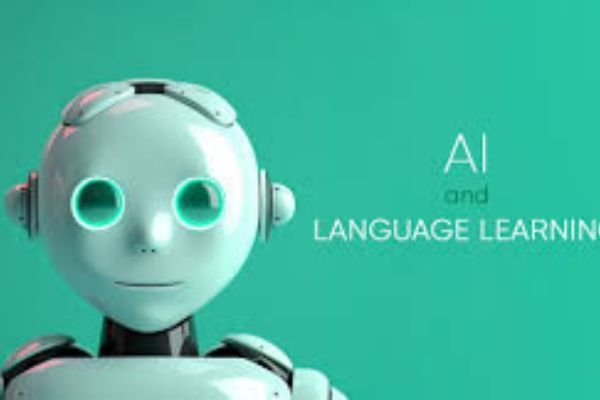In today’s fast-paced digital world, artificial intelligence (AI) is transforming every aspect of our lives—including education. Students today face increasing academic pressure, with large volumes of homework and complex subjects to master. Traditional learning methods, while effective, often leave gaps in understanding, especially when students struggle with difficult concepts outside the classroom. Enter AI-powered homework apps—a groundbreaking solution that provides instant assistance, personalized learning, and round-the-clock support.
Top 10 AI Homework App leverage advanced technologies like machine learning, natural language processing (NLP), and computer vision to help students solve problems, write essays, and grasp challenging topics. These tools are not just about giving quick answers; they are designed to enhance comprehension by breaking down solutions into step-by-step explanations. As AI continues to evolve, its role in education is expanding, making learning more efficient and accessible than ever before.
However, the rise of AI in homework assistance also raises important questions. How much reliance on AI is too much? Can these apps truly replace human tutors? And what are the ethical implications of using AI for academic work? This article explores the features, benefits, challenges, and future of AI homework apps, providing a comprehensive look at how they are reshaping education for students worldwide.
The Rise of AI in Education
Education technology (EdTech) has come a long way from simple online tutorials and video lectures. The integration of AI into learning platforms has revolutionized how students approach their studies. AI-powered tools now offer real-time feedback, adaptive learning paths, and even emotional support by detecting frustration or confusion in students. The shift from passive learning to interactive, AI-driven assistance marks a significant leap in educational innovation.
One of the biggest advantages of AI in homework help is its ability to provide instant solutions. Unlike traditional tutoring, which requires scheduling and often comes at a high cost, AI apps are available 24/7. Whether a student is stuck on a calculus problem at midnight or needs help structuring an essay before a deadline, AI tools can assist immediately. Additionally, these apps adapt to individual learning styles, offering customized explanations based on the student’s pace and comprehension level.
Another key factor driving AI adoption in education is its ability to reduce stress. Many students feel overwhelmed by homework, leading to anxiety and burnout. AI apps alleviate this pressure by offering reliable, on-demand help. They also encourage independent learning by guiding students through problems rather than simply providing answers. As AI continues to improve, its role in education will only grow, making learning more personalized, efficient, and engaging.
Key Features of Top 10 AI Homework App
1. Automated Problem Solving
AI homework apps excel in solving complex problems across subjects like math, physics, and chemistry. Using optical character recognition (OCR), apps like Photomath allow students to scan handwritten or printed equations and receive instant solutions. More advanced platforms, such as Wolfram Alpha, provide step-by-step breakdowns, helping students understand the reasoning behind each solution. This feature is particularly useful for STEM subjects where manual problem-solving can be time-consuming.
2. Natural Language Processing (NLP) for Writing Assistance
For language-based assignments, AI apps leverage NLP to assist with essay writing, grammar checks, and even plagiarism detection. Tools like Grammarly and QuillBot help students refine their writing by suggesting improvements in clarity, tone, and structure. Some AI models, such as ChatGPT, can generate draft essays or summarize lengthy texts, making research and writing more efficient. However, educators caution against over-reliance on these tools, as they should supplement—not replace—critical thinking and originality.
3. Personalized Learning and Adaptive Difficulty
One of the most powerful aspects of AI in education is its ability to tailor learning experiences. Apps like Socratic by Google analyze a student’s strengths and weaknesses, adjusting problem difficulty accordingly. If a student struggles with algebra, the app might provide additional practice problems or simpler explanations. Over time, these systems build a personalized learning profile, ensuring that students master concepts before moving on to more advanced topics.
4. 24/7 Tutoring Support via AI Chatbots
Unlike human tutors, AI chatbots are available anytime, offering instant responses to student queries. Platforms like Khan Academy’s AI tutor and Brainly’s AI assistant allow students to ask questions in natural language and receive detailed explanations. Some advanced chatbots even simulate human-like conversations, making interactions more engaging. This feature is especially beneficial for students in different time zones or those who need last-minute help before exams.
5. Multilingual Support and Translation Features
For non-native English speakers, AI homework apps provide multilingual assistance, breaking language barriers in education. Apps like Duolingo and Google Translate integrate with homework helpers to offer translations and explanations in multiple languages. This ensures that students worldwide can access quality education resources regardless of their primary language.
Benefits of Using AI for Homework
1. Time Efficiency
One of the biggest advantages of AI homework apps is their ability to save time. Instead of spending hours searching for answers in textbooks or online forums, students can get instant solutions with a single scan or query. This efficiency allows them to focus on understanding concepts rather than getting stuck on minor roadblocks.
2. Improved Understanding Through Detailed Explanations
Unlike traditional answer keys, AI apps provide step-by-step reasoning, helping students grasp underlying principles. For example, if a student struggles with a calculus problem, an AI app can break down each step—from differentiation to integration—ensuring the student learns the methodology rather than just memorizing answers.
3. Accessibility for All Students
AI democratizes education by making high-quality tutoring accessible to students regardless of location or economic background. Free or low-cost AI apps provide resources that were once only available through expensive private tutors. This levels the playing field, particularly for students in underfunded schools.
4. Reduced Academic Stress
Homework-related anxiety is a major issue among students. AI apps alleviate this stress by offering reliable assistance, reducing the fear of failure. Knowing that help is always available encourages students to tackle challenging assignments with confidence.
Potential Challenges and Concerns
1. Overdependence on AI
A major criticism of AI homework apps is that they may discourage independent problem-solving. If students rely too heavily on AI for answers, they might neglect developing critical thinking skills. Educators emphasize the importance of using AI as a supplement rather than a crutch.
2. Accuracy and Reliability Issues
While AI is highly advanced, it is not infallible. Some apps may generate incorrect answers or flawed explanations, particularly in complex subjects. Students must cross-verify AI-generated solutions with trusted sources.
3. Privacy and Data Security Risks
AI apps collect vast amounts of student data, raising concerns about privacy breaches. Parents and educators should ensure that apps comply with data protection regulations (e.g., COPPA, GDPR) before allowing students to use them.
4. Ethical Concerns: Cheating vs. Learning Aid
There’s a fine line between using AI for learning and using it to cheat. Some students may misuse AI to complete assignments without genuine effort. Schools must establish clear guidelines on AI usage to prevent academic dishonesty.
Top 10 AI Homework App
1. Photomath

Best for: Solving math problems using image recognition.
Description: Photomath scans handwritten or printed math problems and provides step-by-step solutions. It covers arithmetic, algebra, calculus, and more.
Pros:
✅ Instant answers with detailed steps
✅ Works offline
✅ Interactive graphs and animations
Cons:
❌ Limited to math only
❌ Struggles with complex word problems
🔗 Download: Photomath Official Website | Google Play | App Store
2. Socratic by Google

Best for: Multi-subject homework help (math, science, literature).
Description: Socratic uses AI to scan questions and provide explanations, videos, and step-by-step answers from trusted sources.
Pros:
✅ Supports multiple subjects
✅ Visual learning aids (diagrams, videos)
✅ Free to use
Cons:
❌ Not ideal for advanced college topics
❌ Some answers may be oversimplified
🔗 Download: Socratic Official Website | Google Play | App Store
3. ChatGPT (OpenAI)

Best for: Essay writing, research summaries, coding help.
Description: ChatGPT is an AI chatbot that answers questions, explains concepts, and helps with writing, coding, and problem-solving.
Pros:
✅ Conversational and versatile
✅ Useful for brainstorming and research
✅ Can generate code and essays
Cons:
❌ May produce inaccurate information
❌ Requires fact-checking
🔗 Access: ChatGPT Official Website | Google Play | App Store
4. Brainly
Best for: Crowdsourced homework help and peer learning.
Description: Brainly is a Q&A platform where students ask questions and get answers from a community of learners and experts.
Pros:
✅ Covers multiple subjects
✅ Community-driven explanations
✅ Free and paid versions available
Cons:
❌ Answer quality varies
❌ Some responses may be incorrect
🔗 Download: Brainly Official Website | Google Play | App Store
5. Mathway

Best for: Advanced math problem-solving (algebra, calculus, statistics).
Description: Mathway solves math problems instantly and provides step-by-step solutions (subscription required for steps).
Pros:
✅ Handles complex math topics
✅ Covers multiple math branches
✅ Web and app versions available
Cons:
❌ Requires payment for detailed steps
❌ No image recognition (manual input needed)
🔗 Download: Mathway Official Website | Google Play | App Store
6. Wolfram Alpha
Best for: Computational knowledge (math, physics, engineering).
Description: Wolfram Alpha is a powerful computational engine that solves equations, generates graphs, and provides expert-level answers.
Pros:
✅ Extremely accurate for STEM subjects
✅ Detailed explanations and visualizations
✅ Trusted by professionals
Cons:
❌ Expensive Pro version for full access
❌ Steep learning curve
🔗 Access: Wolfram Alpha Official Website | Google Play | App Store
7. Quizlet

Best for: Flashcards and study aids for memorization.
Description: Quizlet uses AI-powered flashcards, quizzes, and games to help students learn languages, history, science, and more.
Pros:
✅ Great for memorization
✅ User-generated study sets
✅ Free and paid versions
Cons:
❌ Limited for problem-solving
❌ Some content may be outdated
🔗 Download: Quizlet Official Website | Google Play | App Store
8. Gauthmath
Best for: Math problem-solving with live tutor help.
Description: Gauthmath provides AI-generated math solutions and offers live tutoring for difficult problems.
Pros:
✅ Fast math solutions
✅ Live expert help available
✅ Free basic version
Cons:
❌ Tutors require payment
❌ Mostly math-focused
🔗 Download: Gauthmath Official Website | Google Play | App Store
9. Numerade
Best for: Video explanations for STEM subjects.
Description: Numerade offers video tutorials, step-by-step solutions, and AI-powered help for science and math.
Pros:
✅ High-quality video explanations
✅ Covers advanced STEM topics
✅ Free and paid options
Cons:
❌ Limited free content
❌ Mostly for STEM, not humanities
🔗 Access: Numerade Official Website | Google Play | App Store
10. Course Hero

Best for: Study resources, textbook solutions, and expert help.
Description: Course Hero provides study guides, textbook answers, and tutor assistance for various subjects.
Pros:
✅ Huge library of study materials
✅ 24/7 tutor help (premium)
✅ Useful for college students
Cons:
❌ Expensive subscription
❌ Some content locked behind paywall
🔗 Access: Course Hero Official Website | Google Play | App Store
The Future of AI in Homework Assistance: A Deep Dive into Emerging Trends
1. More Interactive AI Tutors: The Next Generation of Personalized Learning
The future of AI-powered homework help lies in creating truly immersive, interactive learning experiences. While current AI tutors excel at text-based explanations, the next wave of innovation will incorporate augmented reality (AR), virtual reality (VR), and mixed reality (MR) to make learning more engaging and effective.
Immersive Learning Through AR and VR
Imagine a student struggling with molecular chemistry. Instead of reading a textbook, they could put on a VR headset and step into a 3D virtual lab, where an AI tutor guides them through experiments in real time. They could manipulate atoms, observe chemical reactions, and receive instant feedback—all in a risk-free, interactive environment. Similarly, history students could “walk through” ancient civilizations, witnessing historical events unfold in AI-generated simulations.
AI-Powered Holographic Tutors
Companies like Meta and Microsoft are already experimenting with holographic AI tutors that appear as lifelike avatars in a student’s study space. These tutors could use gesture recognition and natural language processing to answer questions, demonstrate problem-solving techniques, and even read a student’s facial expressions to adjust teaching methods.
Gamification and Adaptive Challenges
AI tutors will increasingly use gamification to make homework feel less like a chore and more like an engaging activity. Apps might turn math problems into puzzle games or reward students with virtual badges for mastering concepts. AI could also generate adaptive challenges, increasing difficulty only when a student demonstrates proficiency, ensuring optimal learning retention.
2. Integration with School Systems: AI as a Collaborative Teaching Tool
AI won’t just assist students—it will revolutionize how schools track progress, personalize curricula, and support educators. The future will see deeper AI integration into Learning Management Systems (LMS) like Google Classroom, Canvas, and Blackboard, creating a seamless connection between homework help and classroom instruction.
Real-Time Performance Analytics for Teachers
AI-powered LMS platforms will provide real-time dashboards showing:
- Which students are struggling with specific topics
- Common mistakes in assignments
- Individual learning pace and comprehension levels
Teachers could use this data to adjust lesson plans, offer targeted interventions, and even predict which students might need extra help before they fall behind.
Automated Grading with AI Feedback
While some schools already use AI for multiple-choice grading, future systems will evaluate open-ended responses, essays, and complex problem-solving tasks. AI could highlight logical flaws in arguments, suggest improvements in writing structure, and even detect signs of plagiarism or AI-generated content (a growing concern in academia).
Personalized Learning Pathways
Instead of a one-size-fits-all curriculum, AI-integrated school systems will generate customized learning paths for each student. If a student excels in algebra but struggles with geometry, the AI could recommend additional exercises, video tutorials, or peer study groups—all automatically synced with the school’s LMS.
Parental Involvement Through AI Insights
AI could also keep parents informed by sending automated progress reports with actionable insights, such as:
- “Your child is excelling in science but needs extra practice in fractions.”
- “They spent 30 minutes stuck on this problem—here’s a simplified explanation.”
This bridges the gap between classroom and home learning, fostering better collaboration among teachers, students, and parents.
3. Ethical AI Development: Balancing Innovation and Responsibility
As AI becomes deeply embedded in education, ethical concerns must be addressed to prevent misuse, bias, and over-reliance. Developers, policymakers, and educators must work together to ensure AI serves as a fair, transparent, and beneficial tool for all students.
Preventing Algorithmic Bias in Education
AI models are trained on vast datasets, which can unintentionally reinforce biases—such as favoring certain learning styles or cultural perspectives. For example:
- An AI tutor might struggle to understand non-native English speakers.
- Math problem generators might default to Western-centric examples, alienating students from other regions.
To combat this, developers must prioritize diverse training data and implement bias-detection algorithms that flag unfair patterns.
Transparency in AI-Generated Answers
Students (and teachers) deserve to know how AI arrives at its answers. Future AI homework apps could include:
- “Show Your Work” Mode: Instead of just giving answers, AI could display its reasoning process.
- Confidence Scores: Indicating how certain the AI is about its response (e.g., “90% confident this solution is correct”).
- Source Citations: If an AI pulls information from a textbook or research paper, it should provide references.
Preventing Cheating and Academic Dishonesty
While AI can be a powerful learning aid, it also poses risks:
- Students might use AI to generate entire essays instead of writing themselves.
- AI “answer bots” could undermine the value of homework.
Solutions include: - AI Detection Tools: Schools may use software like Turnitin’s AI Writing Detector to identify AI-generated submissions.
- Ethical Use Policies: Clear guidelines on when AI assistance is permitted (e.g., for brainstorming but not final drafts).
- “Guardrails” in AI Tutors: Programming AI to encourage critical thinking (e.g., “Try solving the next step yourself before I help”).
Data Privacy and Security in EdTech
AI homework apps collect vast amounts of student data—keystrokes, voice recordings, even biometric data in VR learning. Protecting this information is crucial. Future regulations may require:
- Strict compliance with COPPA (Children’s Online Privacy Protection Act) and GDPR.
- End-to-end encryption for all student-AI interactions.
- Anonymized data usage so that AI improves without compromising individual privacy.
The Role of Policymakers and Educators
Governments and school districts will need to establish:
- AI in Education Guidelines: Defining acceptable use cases.
- Teacher Training Programs: Helping educators integrate AI tools effectively.
- Public AI Literacy Campaigns: Teaching students how to use AI responsibly.
Conclusion
AI homework apps represent a transformative shift in education, offering unparalleled convenience, personalization, and accessibility. These tools empower students to learn at their own pace, providing instant help while reinforcing comprehension through detailed explanations. However, as with any technological advancement, there are challenges to address—overdependence, accuracy, privacy, and ethical dilemmas must be carefully managed.
The key to maximizing AI’s benefits lies in balanced usage. Students should view AI as a supplementary tool rather than a replacement for traditional learning. Educators and parents must guide students in using these apps responsibly, ensuring they develop critical thinking skills alongside technological literacy.
As AI continues to evolve, its potential in education is limitless. By embracing these innovations thoughtfully, we can create a future where every student has access to personalized, high-quality learning support—anytime, anywhere. The journey has just begun, and the possibilities are endless.
The future of AI in homework assistance is not just about smarter algorithms—it’s about creating a holistic, ethical, and engaging learning ecosystem. From VR chemistry labs to real-time classroom analytics, AI will blur the lines between digital and physical education, offering students unprecedented support.
However, this future depends on responsible innovation. Developers must prioritize fairness, transparency, and privacy, while schools must balance AI’s benefits with the need for authentic learning. If implemented thoughtfully, AI could democratize education, giving every student—regardless of background—access to personalized, high-quality tutoring.
The classroom of 2030 might look very different: a blend of human teachers and AI assistants, where homework is not a solitary struggle but an interactive, adaptive, and even enjoyable journey. The key lies in shaping this future with intention, ensuring AI remains a tool for empowerment—not a replacement for human ingenuity.






